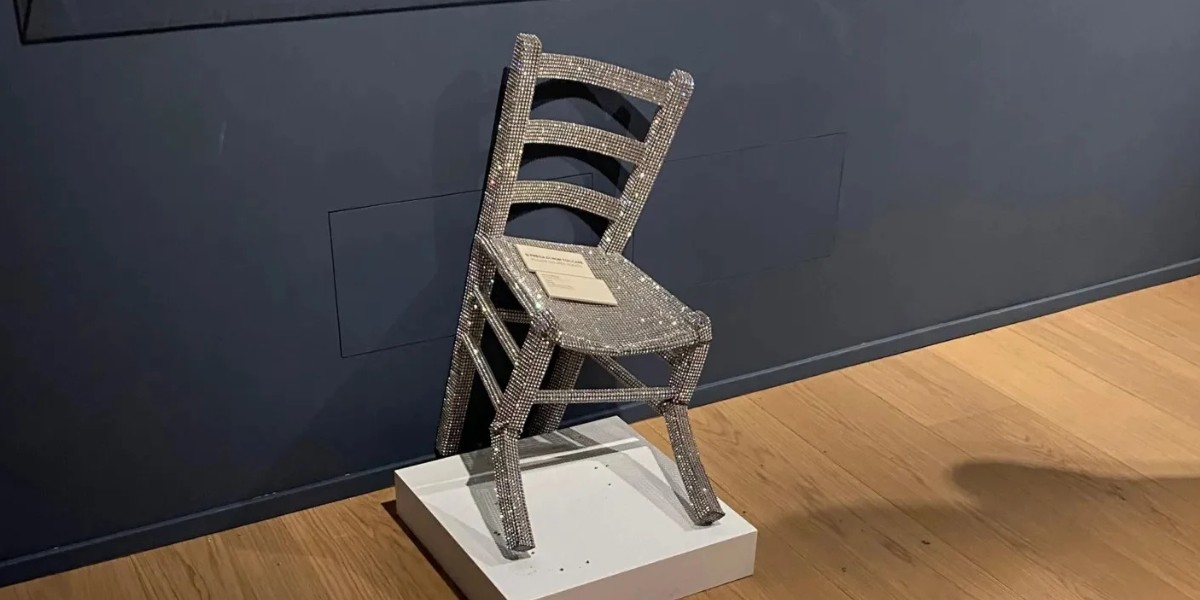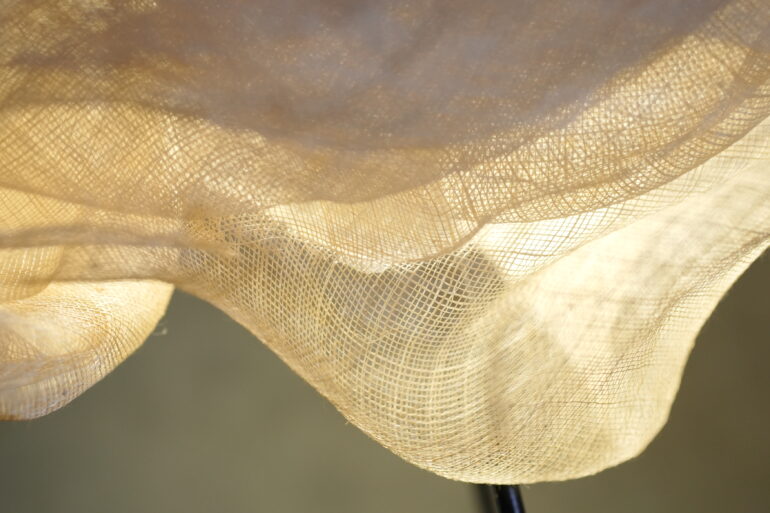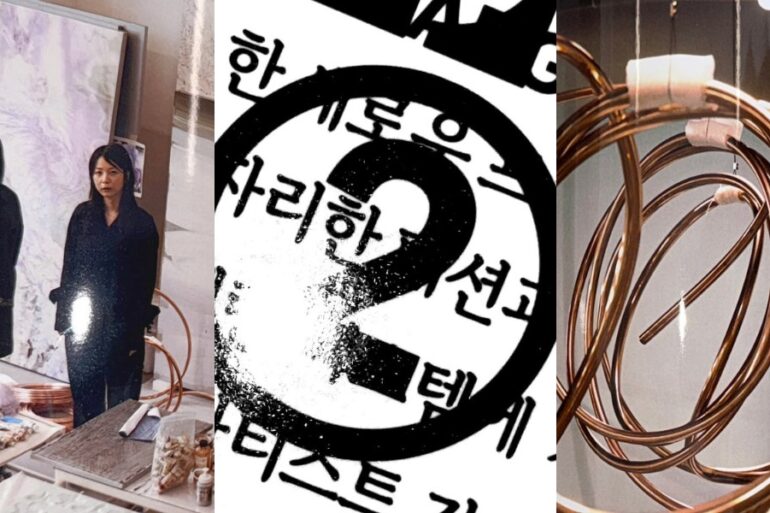The message of Bolla’s artworks—that luxury is precious but weak—echoed around the whole world when his “Van Gogh” chair was accidentally smashed by tourists.
Luxury is an ever-evolving concept that differs in every perspective. And if there’s one thing that could best define what it can, or cannot be, that would be the “Van Gogh” chair by Nicola Bolla. It is his modern interpretation of the painting “Van Gogh’s Chair” by Dutch painter Vincent van Gogh. Bolla created the prized sculpture between 2006 and 2007, according to CNN, and it has since been preserved at the Palazzo Maffei in Verona, Italy.
Bolla turned an everyday chair into a work of art using polished, machine-cut glass and bedecked it with hundreds of Swarovski crystals. BBC reported that the museum declined to reveal the value of the sculpture, but estimates claim up to $50,000 (P2.9 million).
It is a fragile masterpiece—and now broken after a tourist sat on it.
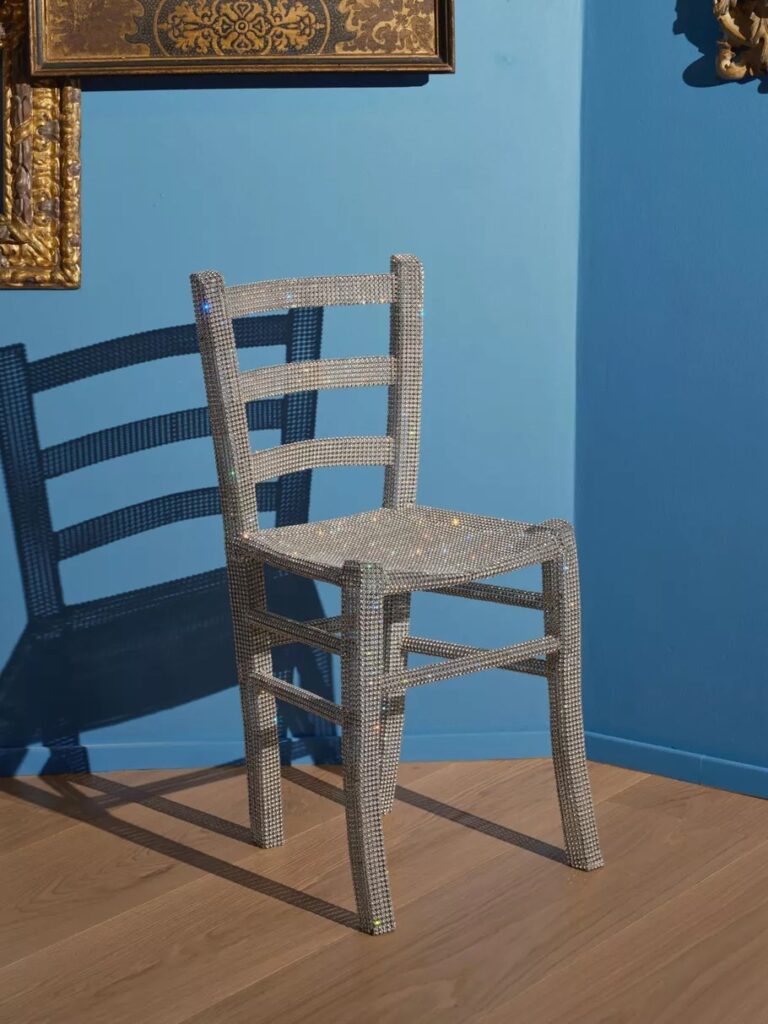
Photo from Palazzo Maffei
Bolla is one of the most renowned Italian contemporary artists in the world. An eye surgeon by day and a conceptual sculptor after hours, Bolla is most famous for reinterpreting the familiar through unexpected materials, like Swarovski crystals and playing cards.
One of his standout works, the Skull (1997), also uses shimmering crystals to bring luxury to what is deemed a symbol of death. It is a part of Bolla’s crystal-encrusted Vanitas series, which, like most of his artworks, emphasizes the idea of life’s fragility.
Alberto Fiz, curator of Bolla’s exhibit in Sperone’s gallery in New York, said that Bolla’s works invite people “to reflect on a world constructed around the beauty and appearance of objects. And in his work made of crystals, the jewels hide a deep sense of melancholy.”
Related story: Women have the power to change reality through their art
Related story: Eight essential New York City museums you absolutely must visit
Inspired by Van Gogh’s iconic painting
Bolla’s “Van Gogh” chair holds profound meaning beyond its shiny and captivating aesthetic. The sculpture draws from one of Van Gogh’s most iconic paintings featuring “a simple chair set on a bare floor of terracotta tiles.”
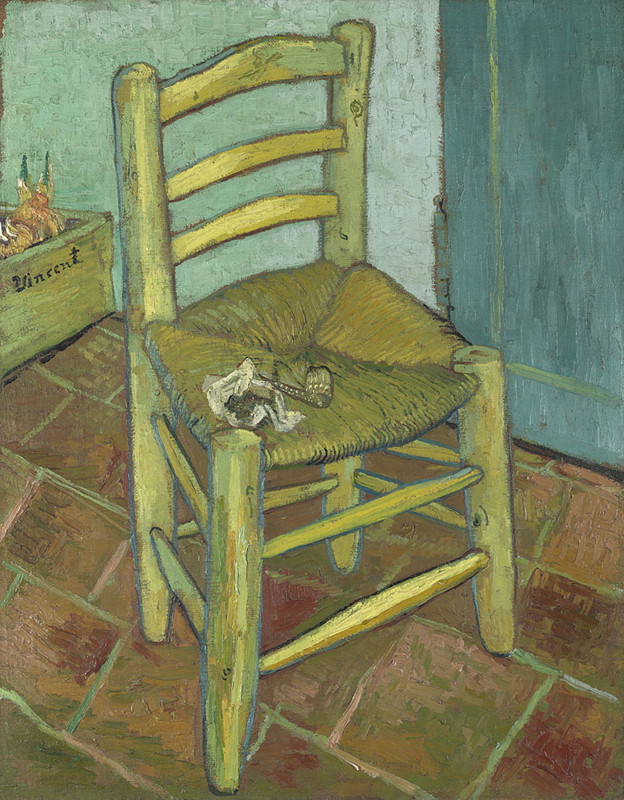
Photo from the National Gallery of London
This chair is reminiscent of the peasant chairs found in the iconic painter’s Dutch paintings from the 1800s. It is made of plain, unpolished wood painted yellow and built with a straight back and woven seat. It’s as simple as a basic chair can be, with no armrests for support or comfort. And although it appears to be entirely functional, the National Gallery notes that “it is also crudely made—the legs, for example, are not quite properly aligned.”
Van Gogh’s painting goes in pair with another picture, Gauguin’s Chair, which he also created in November 1888 in France. He began working on them shortly after French painter and sculptor Paul Gauguin joined him in Arles, where they lived together in the Yellow House.
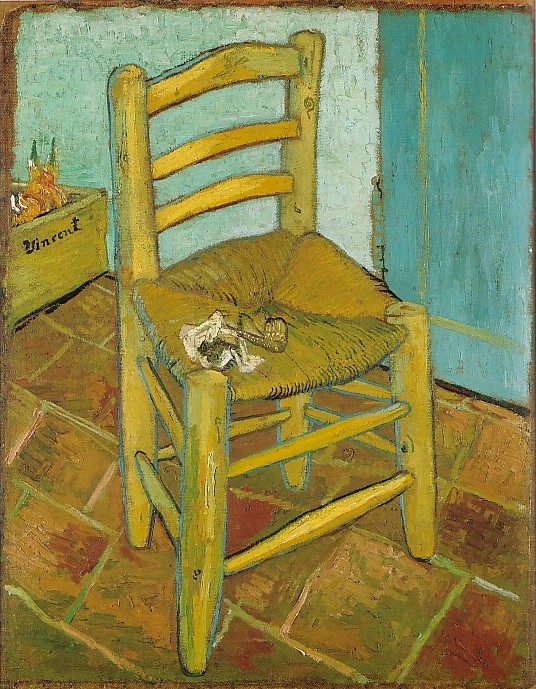
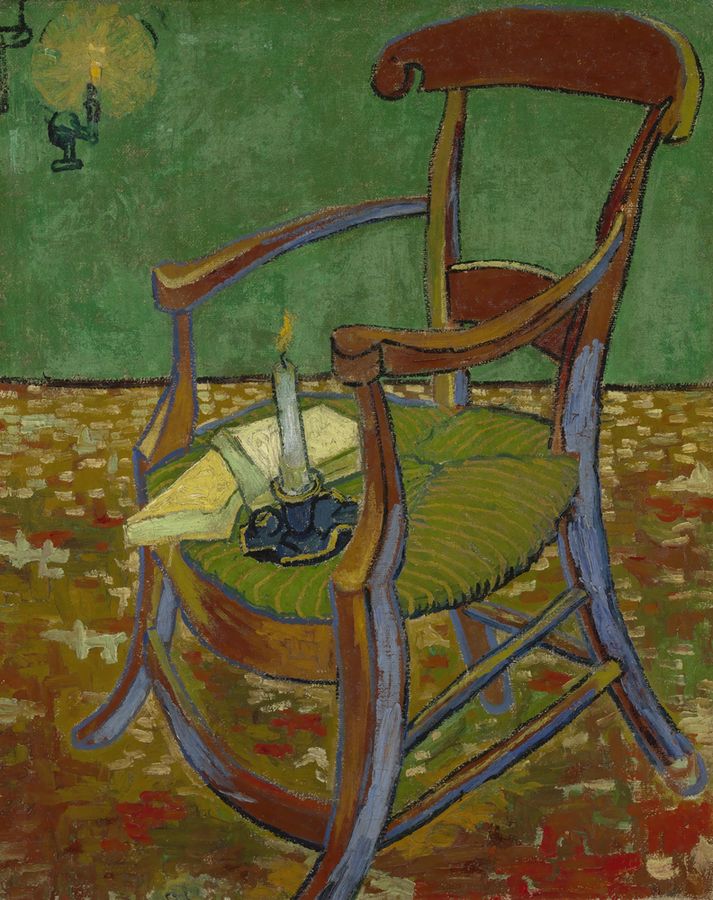
London’s National Gallery described the two paintings as “surrogate portraits, representing the personalities and distinct outlooks of the two artists.” Van Gogh designed Gauguin’s chair as elegant, with a “finely carved armchair,” and set in the nighttime. Meanwhile, his own chair is simple, functional, and “shown in bright daylight.”
The motif holds great significance to Van Gogh for several reasons. In a letter written to his brother Theo, the painter admitted crying at the sight of his father’s empty chair after he had died in 1885. The painting also eventually became a symbol of Van Gogh’s estranged friendship with Gauguin. He further affirmed his melancholy about empty chairs in another letter to Theo, where he wrote a line from the song The Little Chairs: “Empty chairs — there are many, more will come.”
Related story: Jay-R Delleva’s pop surrealism and the quiet power of endurance
Related story: Art behind closed doors: Four artists unveil ‘Bed, Bath & Hubad’
An irony of appearance and substance
Bolla’s sculpture “Van Gogh’s Chair” is the same as that of the art icon’s—empty. But the Italian artist added more meaning to it by presenting it as an irony of appearance and substance.
Carlotta Menegazzo, an art historian at Palazzo Maffei, told BBC that although the sculpture may look sturdy, it is, in fact, hollow and only held together with foil. It is consistent with Bolla’s artistic practice, wherein traditional elements are reworked according to an aesthetic that presents the contrast between beauty and content.
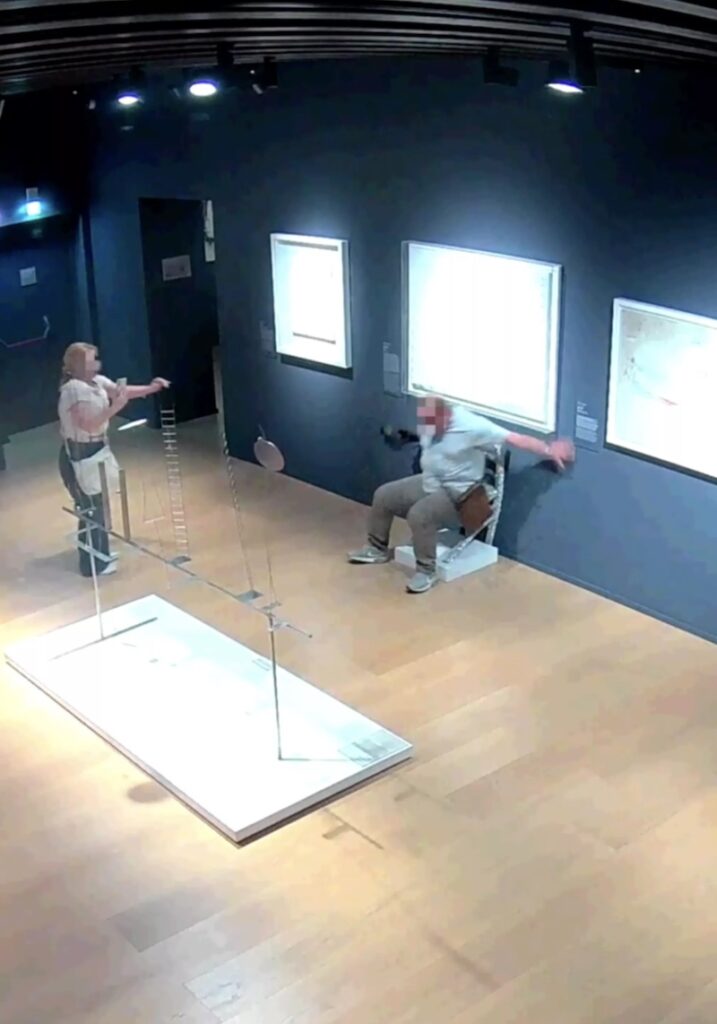
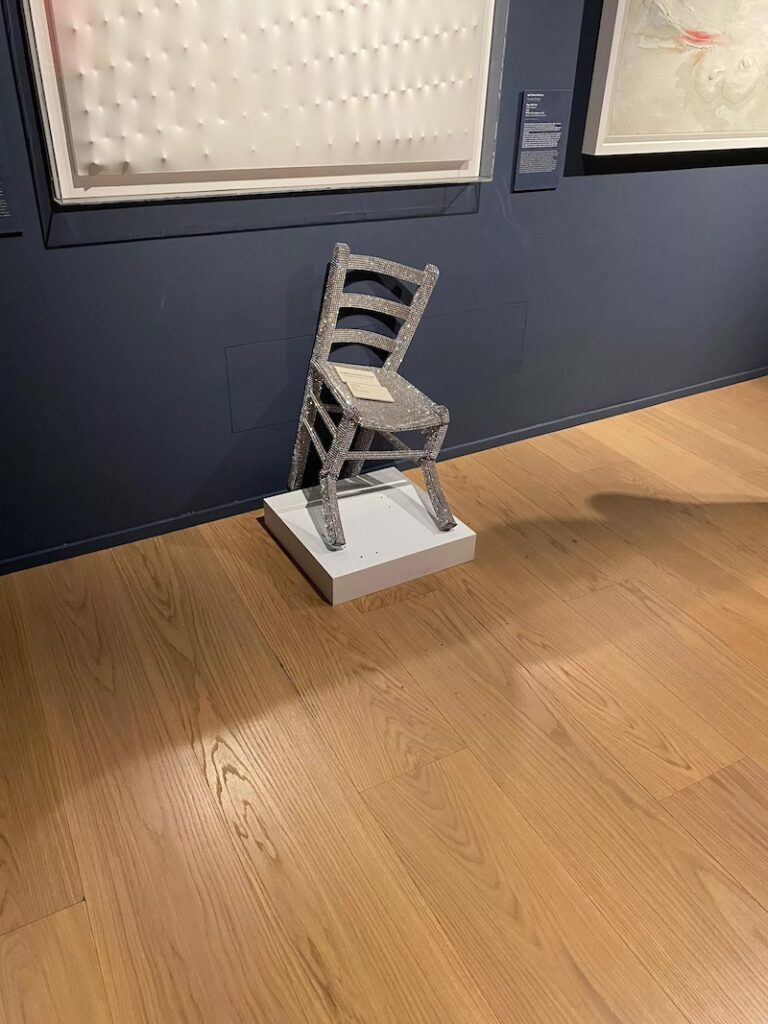
According to Italian art magazine Finestre sull’Arte, the crystal elements in Bolla’s works are not a status symbol. “It is seen more as a means of representing the illusion of value, the ambiguity between appearance and substance. Swarovski, in fact, is ground glass, imitating diamond without possessing its properties,” it noted. “Moreover, crystal brings with it an ambiguous physicality: it appears solid but crumbles easily, it imposes itself on the eye but has no weight.”
As seen in his works, Bolla is a believer of memento mori—a symbolic reminder that death is inevitable and should therefore inspire us to live more meaningful lives. His works, like the “Van Gogh” chair, are brilliant, enchanting, and luxurious. At the same time, they are empty, frail, and useless. It’s a call to fill our lives with greater significance and purpose because luxury, he believes, is a mere illusion—it is never authentic.
Related story: Louvre shuts down as staff go on sudden strike due to overtourism
Related story: Another fashion controversy: Major brands linked to alleged child labor in cotton farms
Emphasizing the importance of respecting art
The message of Bolla’s artworks—that luxury is precious but weak—echoed around the world when his “Van Gogh” chair was accidentally smashed by a couple viewing the sculpture in Palazzo Maffei last April.
The gallery, on June 12, released a video of the man and a woman taking pictures of each other while pretending to sit on the crystal-coated chair. The man appears to slip and fall, crushing the sculpture underneath him. Two legs and the main seat were broken, with the couple fleeing the museum before staff even noticed what happened.
While Bolla told Italian magazine Fanpage that “it was an idiotic thing to do,” the artist admitted seeing the “positive side” of it. He said, “It’s like a kind of performance. Ordinary people can do it too, not just artists.”
Palazzo Maffei, on the other hand, likened the incident to a “nightmare.” Museum director Vanessa Carlon said in a press release, “Sometimes we lose our brains to take a picture, and we don’t think about the consequences.”
“Of course it was an accident, but these two people left without speaking to us—that isn’t an accident,” she added. “This is a nightmare for any museum.”
Menegazzo, meanwhile, said that a “great job” has been done to restore Bolla’s sculpture, and it is now back in its place. She hopes that the incident will rather highlight the value of respecting works of art. “Anyone should enter art places, or museums, or churches, wherever art is displayed, in a more respectful way,” she told BBC. “Art must be respected and loved because it is very fragile.”
Related story: From the stolen Amorsolo to other missing artworks: Why art theft is both an atrocity and a fascination
Related story: Peeling back Maurizio Cattelan’s duct-taped banana artwork, set to fetch over $1.5 million at auction

